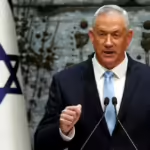If war is too serious a business to be left to the generals, it is also too serious a business to be left to ignorant politicians.
‘Hot war’ between India and China will lead to a larger regional conflagration with untold and possibly unforeseen consequences for both the Asian giants.
Is the force build-up at Indo-China border an outcome of a bigger strategy of Asian powers?
There is no simple answer to the unpretentious question.
Today’s geo-politics is revolving around new systems with new complexities.
As long as we remain caught in generalisation, the fog in our minds will only get thicker.
But if we switch to current reality, we might find some plausible answers to the five broader questions that have been preying on the minds of millions.
Is China flexing muscles or fortifying its trade routes?
Chinese forces are not there on Indian borders for few morsels of territory in Ladakh.
That will be too minimalistic for such a risky move.
Western world is having its own narrative on Chinese build-up but a holistic picture can be seen only if we look through the Chinese prism.
To accelerate its growth rate in the next decade, China not only requires robust industrial output but they also need safe and secure routes which function as trade arteries and provide inward movement of oil and raw material from West Asia and Africa.
China remains heavily dependent on Middle Eastern oil, with up to 80 percent of its energy supply passing through the Strait of Malacca.
Any disruption – ranging from piracy to fears of a potential naval blockade by the United States or India – will have an adverse impact on China’s long-term food and energy security.
The much debated project of OBOR provided the answer to two persistent problems of China—the alternate route for energy & trade and development of western hinterland.
China so far invested close to $400 billion on its flagship programme, CPEC (China Pakistan Economic Corridor), on development of Gwadar port and building of highways across Pakistan (through Gilgit-Baltistan) to connect with Xinjiang and Tibet.
China is getting increasingly sensitive about the security of the corridor which is passing under the combat range of Indian Army after the building of new roads along LAC.
Where do the interests of two Asian giants clash?
China’s core interests have dictated that India should be firmly dissuaded from considering recovery of Gilgit-Baltistan to fulfil its long-stated goal of unifying Kashmir.
From Beijing’s perspective, any Indian attempt to take over Gilgit-Baltistan would wreck CPEC.
The Chinese have also been uncomfortable with infrastructure development along the Line of Actual Control (LAC) with India, especially due to the pressure it imposes on Aksai Chin.
By 2008, India had reactivated the airfield of Daulet Beg Oldie (DBO) which is in the south of Karakoram Pass and just nine kilometres from Aksai Chin.
Advance landing grounds of Fukche and Nyoma had also been revived.
India is fast catching up with China in terms of border infrastructure.
Indian road construction activity with the 255-km Darbuk-Shayok-Daulat Beg Oldi (DSDBO) as the spine has steeled Indian connectivity along the LAC, adding further pressure on Aksai Chin.
Chinese PLA was getting increasingly uncomfortable with these infra activities being developed by India.
Is the present stand-off an outcome of a planned strategy?
The simultaneous face-off at three different places along the LAC appears not only well coordinated but also part of a plan that could not have been conceived at the local or sub-area level.
It’s well established now that PLA surprised Indian Army by moving forces to its borders directly from a massive military exercise to reinforce tactical locations.
Is there a possibility of full-scale war?
India and China are divided by natural borders of high mountains.
Both the countries know that it’s not easy to retain the captured territory by either of them, because harsh weather and rugged mountains will cut off their supply lines for major parts of the year.
Militarily, both are nuclear armed countries and cannot be pushed by each other beyond an extent.
Even in conventional war, no side has a clear edge in mountains.
In the current situation, both China and India may try to secure strategically favourable locations on the high mountains.
China would like to have access over the ridges overlooking DSDBO road, and India will ensure development of infrastructure to move troops and machines on the borders.
A complete disengagement may take very long this time.
Is the world heading for the ‘New Cold War’ era?
Many analysts are trying to portray the crisis as part of superpower game play in the so-called ‘New Cold War.’
Some media experts see U.S. support as one of the main drivers behind India’s firmness and aggression in dealing with its border issues with China, but that seems far from the truth.
In reality, business interests are playing a major role in the international arena and these are not favourable at the moment for a bipolar world.
It is difficult to foresee a return to a bipolar world, even amid the sharpening contradictions between China and the West. Half of the twenty largest economies of the world are non-western now.
Diffusion of technology and demographic differentials will also contribute to the broader spread of influence.
China is fast becoming self-reliant in terms of weaponry, and remains no lucrative market for Russia.
In fact Russian arms industry is facing stiff competition from China globally.
Russia would not like to lose India as its lucrative buyer for its weaponry.
Israel is having warm relations with China but cannot drift away from India—a long-time friend and a major market for its technology and weapons.
There are growing voices in the West that the U.S. should forge a deep strategic alliance with India.
This also gels with the emerging view of India being a natural ally of the United States and thus a bulwark against China in Asia.
While this may come as a big boost to India’s position in the region, New Delhi must tread this path cautiously.
The “New Cold War,” if it ever becomes a reality, would be completely different from the Cold War of the twentieth century.
The U.S. no longer enjoys the same hegemonic status as it did decades ago.
Its position as the leader of the liberal international order has long been eroded.
It may thus not be advisable for India to put all its eggs in one basket.
India must, as it is trying to, handle its bilateral issues with China in an independent manner without falling prey to any narrative.
Jai Kumar Sharma is Consultant Editor for Daily Trust based in New Delhi. He is among few journalists who have travelled across length and width of Ladakh in last three decades. He understands strategic importance of its frontiers with Pakistan and China.

 Join Daily Trust WhatsApp Community For Quick Access To News and Happenings Around You.
Join Daily Trust WhatsApp Community For Quick Access To News and Happenings Around You.


